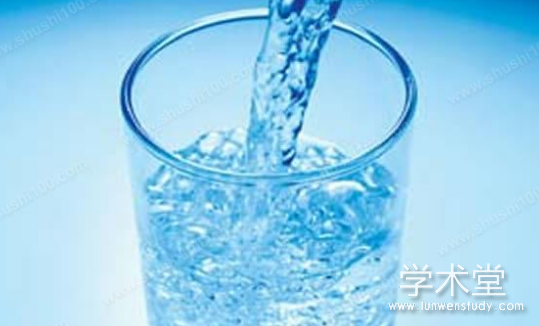摘 要
硫酸新霉素废水中 COD、硫酸盐、总氮浓度较高,成分复杂,属于高浓度、难降解有机废水。本研究分析了硫酸新霉素对厌氧消化的抑制影响,考察了厌氧生物处理硫酸新霉素废水的可行性,并进行了好氧生物脱氮试验研究,在此基础上采用Fenton 氧化法进行深度处理,使出水水质达到《发酵类制药工业水污染物排放标准》(GB21903-2008)要求。研究结论如下:
1)以葡萄糖为基质的产甲烷毒性实验表明,当硫酸新霉素浓度为 300~900mg·L-1时,对产甲烷反应有轻度抑制;当硫酸新霉素浓度为 1 200mg·L-1时,对产甲烷反应有中度抑制。
2)采用 UASB 反应器处理硫酸新霉素废水可行性试验的研究结果表明,当进水COD 5 000~5 500mg·L-1、SO42-600~650mg·L-1、总氮 700~750mg·L-1,容积负荷达到5.2kg-COD·m-3·d-1,水力停留时间 24h 时,反应器中废水上升流速为 0.0416m/h,出水 COD 1 200~1 400mg·L-1、SO42-15~20mg·L-1、氨氮 600~650mg·L-1,系统 COD 去除率可稳定在 70%以上。采用 UASB 反应器处理硫酸新霉素废水的方法是可行的。
3)采用 SBR 反应器对 UASB 反应器出水进行生物脱氮处理,确定最佳工艺条件为缺氧 6h、好氧曝气 10h;进水 COD 和氨氮的浓度分别为 1 200~1 400mg·L-1和600~650mg·L-1时,出水中 COD 和氨氮浓度分别为 400~500mg·L-1和 12~16mg·L-1,去除率分别为 65%和 95%。
4)采用 Fenton 氧化法对 SBR 处理出水进行深度处理的试验结果表明,最佳反应条件为初始反应 pH 值 3.0、30%H2O2投加量 5‰、Fe2+/H2O2摩尔比 1:15 和反应时间 40min。此条件下,COD 去除率达到 80%以上,出水 COD 小于 200mg·L-1,满足《发酵类制药工业水污染物排放标准》(GB21903-2008)要求。
关键词 : 硫酸新霉素废水;厌氧消化;UASB;SBR;Fenton 氧化法
Abstract
Neomycin sulfate wastewater, a kind of high concentration organic wastewater withrelatively high concentrations of COD, sulfate and total nitrogen, which is difficult to bedegraded. In this paper, the experiment examined the effect of neomycin sulfate onanaerobic digestion was examined firstly. Secondly, the anaerobic biodegradationexperiment of neomycin sulfate was studied by UASB. Then, the biological nitrogenremoval of UASB effluent experiment was investigated by SBR. Finally, a deep treatmentof SBR effluent was treated with Fenton oxidation method. The quality of effluent couldbe up to the discharge standard of "discharge standards of water pollutants forpharmaceutical industry" (GB21903-2008). Findings are as follows:

1) The effect of neomycin sulfate on anaerobic digestion showed that differentconcentrations of neomycin sulfate caused different degrees of inhibition to anaerobicdigestion. The concentration of neomycin sulfate with 300~900mg·L-1had mildinhabitation on anaerobic digestion. When neomycin sulfate concentration up to1200mg·L-1, the anaerobic digestion was moderately inhibited.
2) With the 24h of hydraulic residence time and the 5.2kg-COD ? m-3·d-1of volumeloading in UASB, when the influent contained: COD 5 000~5 500mg·L-1, sulfate600~650mg·L-1and total nitrogen 700~750mg·L-1, COD, sulfate and ammonia nitrogen ineffluent could be decreased to 1 200~1 400mg·L-1, 15~20mg·L-1and 600~650mg·L-1,respectively. The removal rate of COD reached 70%. The results showed that the UASBreactor was feasible for neomycin sulfate wastewater treatment.
3) The SBR reactor was used to treat the effluent from UASB reactor in order toremove the ammonia nitrogen. The influent contained COD 1 200~1 400mg·L-1andammonia nitrogen 600~650mg·L-1. The optimum process condition consisted a 6h anoxicperiod and a 10h aerobic period, which was determined by optimizing tests. After SBRtreatment, COD and ammonia nitrogen in the effluent were decreased to 400~500mg·L-1and 12~16mg·L-1, with the removal rate of 65% and 95%, respectively.
4) Fenton reagent was studied on advanced treatment of neomycin sulfate wastewater.
The results of advanced treatment of SBR effluent with Fenton oxidation method showedthat the optimum conditions for COD removal were consist of the initial pH at 3.0, theratio of Fe2+/H2O2at 1:15, the amount of 30% H2O2at 5‰ and the reaction time at 40min.
Under the optimum conditions, the removal rate of COD was more than 80%. The COD of effluent was less than 200mg·L-1, which reached the discharge standard of "dischargestandards of water pollutants for pharmaceutical industry" (GB21903-2008).
Key words Neomycin sulfate water;Anaerobic digestion;UASB;SBR;Fentonoxidation
目 录
摘 要
Abstract
第 1 章 绪 论
1.1 硫酸新霉素生产废水的来源及特征
1.2 抗生素废水处理技术现状
1.3 研究目的意义及主要内容
第 2 章 硫酸新霉素对厌氧消化的抑制影响研究
2.1 试验材料与方法
2.2 试验方法
2.3 结果与讨论
2.3.1 厌氧消化的产甲烷情况
2.3.2 反应前后消化液的变化情况
2.3.3 硫酸新霉素与最大比产甲烷速率的关系
2.3.4 硫酸新霉素的去除情况
2.4 本章小结
第 3 章 硫酸新霉素废水厌氧生物处理试验研究
3.1 材料与方法
3.2 试验方法
3.3 结果与分析
3.3.1 运行情况
3.3.2 pH 和碱度对厌氧消化的影响
3.3.3 硫酸根对厌氧消化的影响
3.3.4 硫酸新霉素对厌氧消化的影响
3.4 本章小结
第 4 章 硫酸新霉素废水生物脱氮试验研究
4.1 试验材料与方法
4.2 试验方法
4.3 结果与分析
4.3.1 缺氧时间对处理效果的影响
4.3.2 曝气时间及 DO 对处理效果的影响
4.3.3 pH 对处理效果的影响
4.3.4 SBR 的处理效果
4.4 本章小结
第 5 章 Fenton 氧化法深度处理生化出水试验研究
5.1 试验材料与方法
5.2 试验方法
5.3 结果与分析
5.3.1 正交试验结果分析
5.3.2 单因素试验结果分析
5.3.2 组合工艺对废水的处理效果
5.4 本章小结
结 论·
参考文献·





